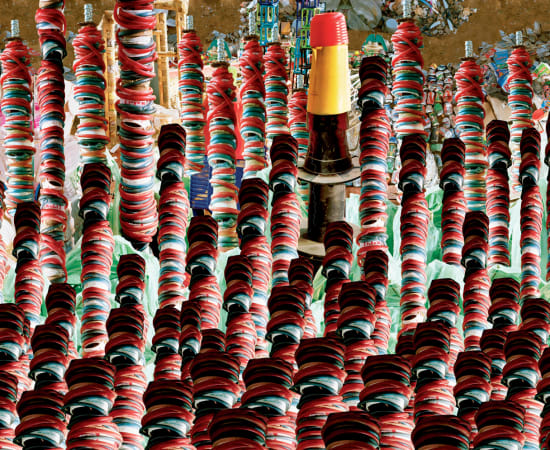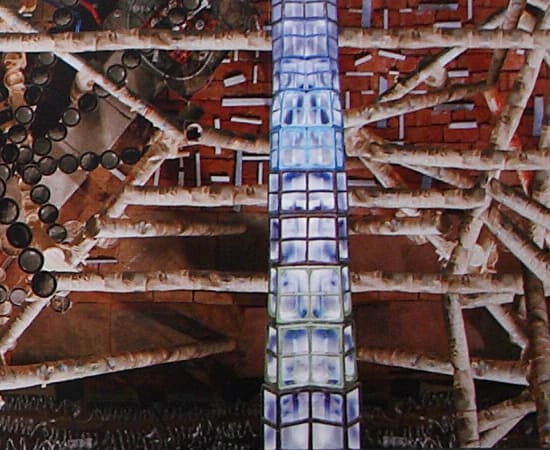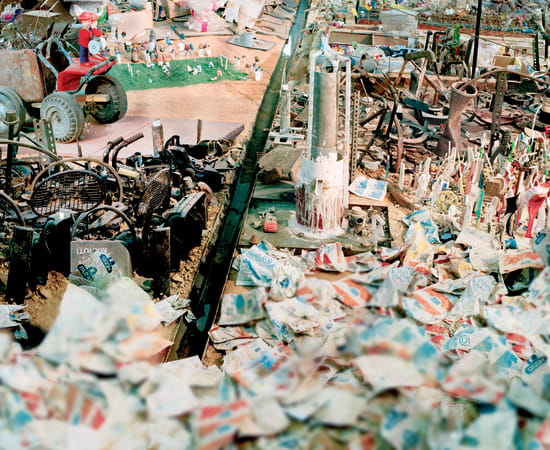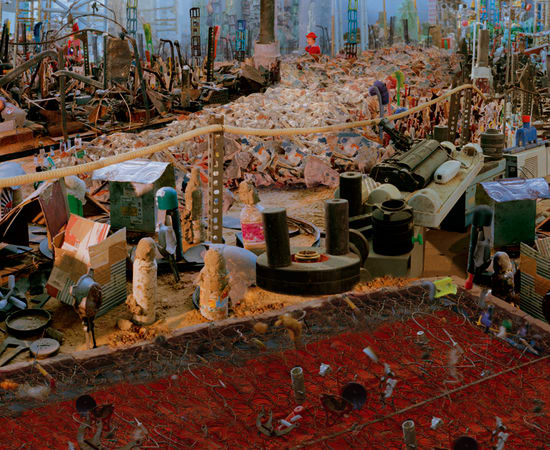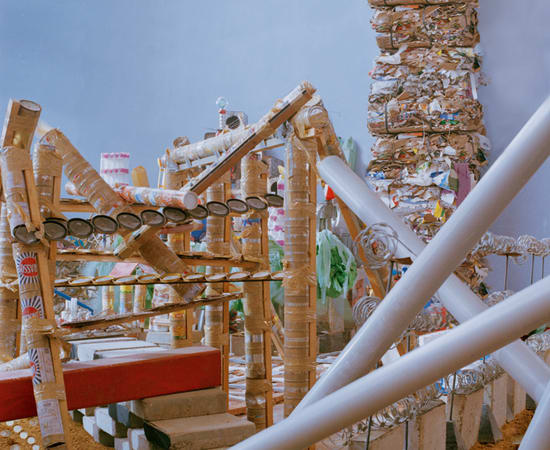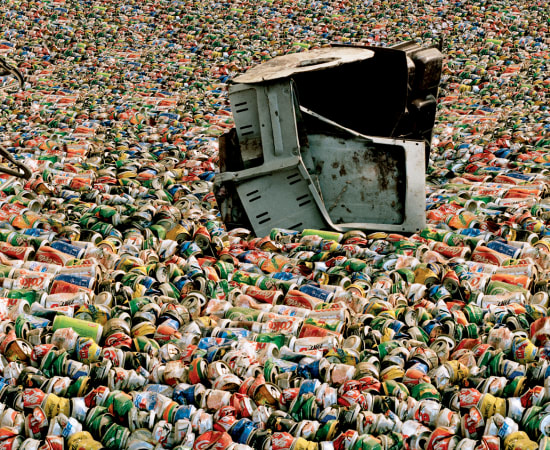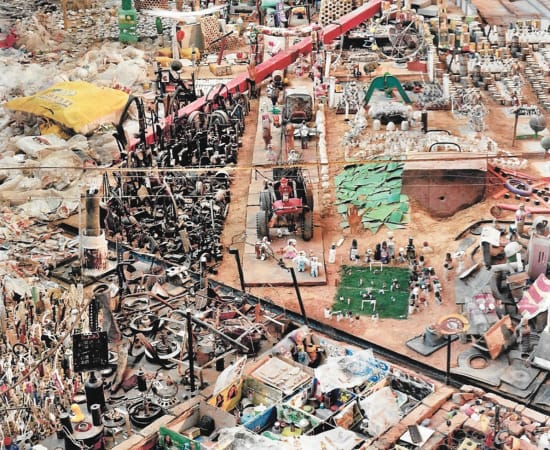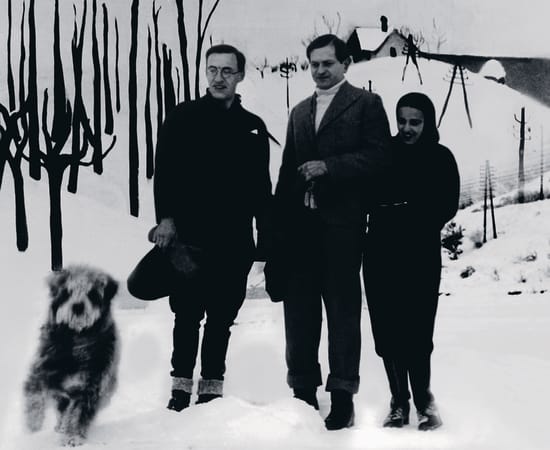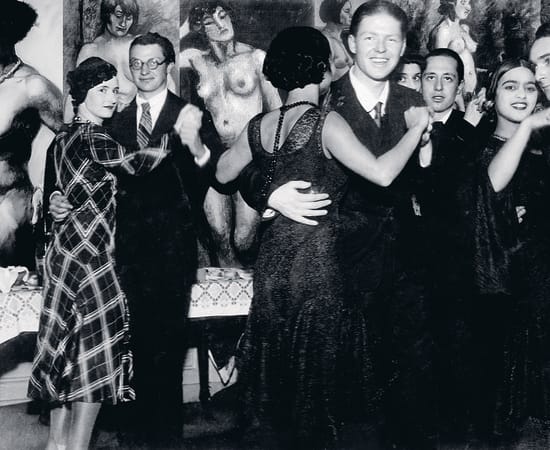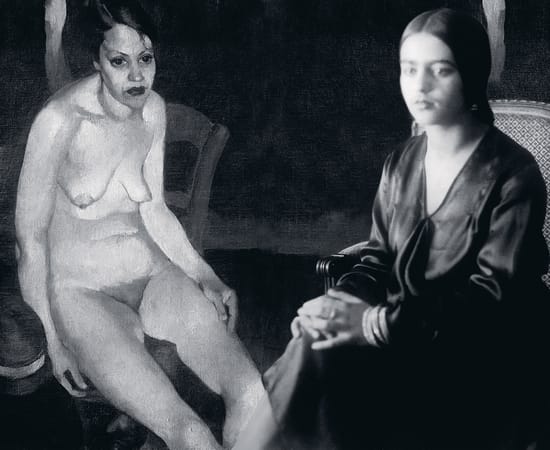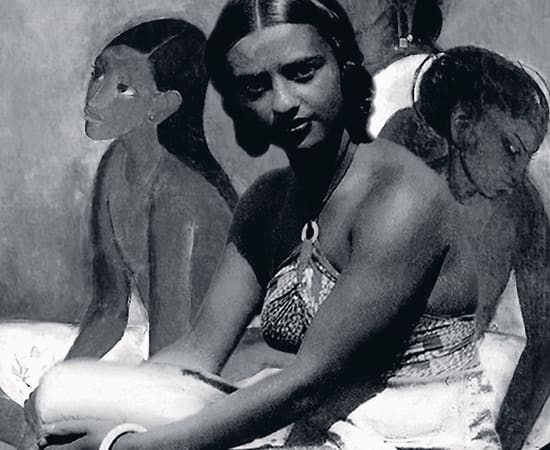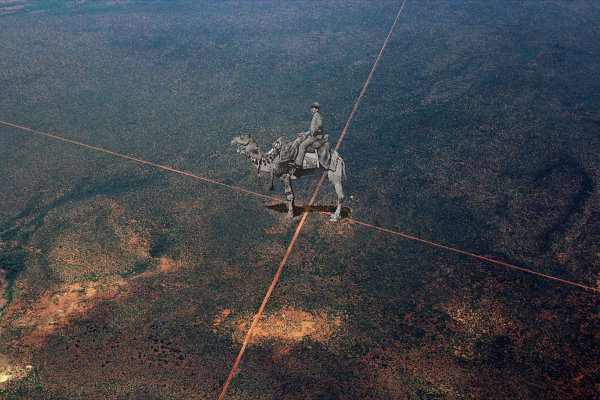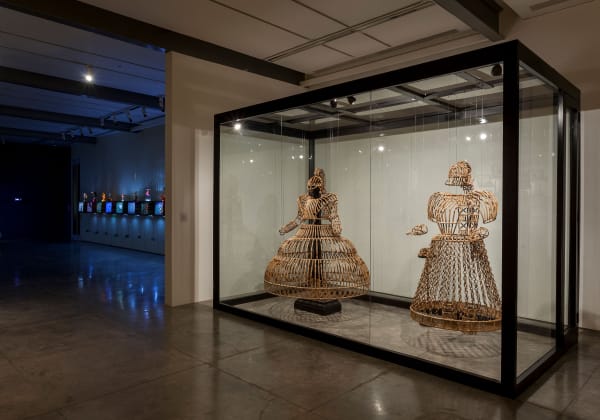Vivan Sundaram Indian, 1943-2023
-
 Barricade (with Coils), 2008
Barricade (with Coils), 2008 -
 Barricade (with Glass Tower), 2008
Barricade (with Glass Tower), 2008 -
 Barricade (with Gutter), 2008
Barricade (with Gutter), 2008 -
 Barricade (with Mattress), 2008
Barricade (with Mattress), 2008 -
 Barricade (with Props), 2008
Barricade (with Props), 2008 -
 Fly, 2008
Fly, 2008 -
 Metal Box, 2008
Metal Box, 2008 -
 Prospect, 2008
Prospect, 2008 -
 Retake of Amrita: Snow, 2002
Retake of Amrita: Snow, 2002 -
 Retake of Amrita: Dancing in the life-class, 2001-2002
Retake of Amrita: Dancing in the life-class, 2001-2002 -
 Retake of Amrita: Malaise, 2001-2002
Retake of Amrita: Malaise, 2001-2002 -
 Retake of Amrita: Amrita with ‘Fruit Vendors’, 2001
Retake of Amrita: Amrita with ‘Fruit Vendors’, 2001
Vivan Sundaram (1943 - 2023) was one of India’s most pioneering artists. His artworks spanned a variety of mediums and scales, addressing issues surrounding national modernism, post-colonial identities, and the ideologies of the third-world. Driven by archival and allegorical impulses, his bold political paintings, artistic collaborations, reckonings with his ancestry, and reflections on topical events revealed his engagement with contemporary society, history, and memorialisation. As an ardent materialist, he experimented robustly with pushing the boundaries of the picture-plane, becoming India’s first installation artist.
Sundaram studied painting at MSU Baroda under KG Subramanyan in the early 1960s. Subsequently, he attended the Slade School in London as a Commonwealth scholar where he was taught by the American artist, RB Kitaj. Deeply influenced by the 1968 protests in England, his early paintings embodied geometric abstraction as well as elements of kitsch and pop art, demonstrating his developing political imagination. In London, Sundaram also studied the history of cinema, which led to his enduring interest in formal and conceptual qualities of film, influencing him to adopt principles of collage/montage. His painting, 'From Stan Brakhage to Persian Miniature' (1968), for instance, juxtaposed elements from ostensibly incompatible registers of experimental cinema and miniature painting. It showcased the artist's early interest in art history as well as his explorations of scale and perspective.
In the 1970s, Sundaram began investigating the ethical function of artistic representation while deliberating human struggle. 'The Heights of Macchu Picchu' (1972) featured rhythmic ink drawings that accompanied verses from Pablo Neruda’s poem, expressing solidarity with oppressed populations. Engaging in Marxist thought, Sundaram organised projects with the Student Federation of India and the All India Kisan Sabha. It was around this time that he also founded the Kasauli Art Centre (1976-91) and later the Journal of Arts & Ideas (1981-99), which provided platforms for artists and writers to experiment and collaborate. In 1981, Sundaram’s paintings were featured in the landmark exhibition ‘Place for People’ that highlighted the Narrative Figurative Movement in Baroda, where artists turned away from abstractionist tendencies of the time. The show encouraged Sundaram to address difficult themes in his practice, seen prominently in his lamentation of Delhi’s anti-Sikh riots in his exhibition ‘Signs of Fire’ (1984) at Gallery Chemould.
Sundaram traveled to Poland in 1989 where his visit to Auschwitz inspired his series, 'Long Nights' (1989), dedicated to the victims of the Holocaust. He continued to engage with historical narratives, with the 1990s proving a poignant turning point in his artistic practice. While responding to the Gulf War, Sundaram began working with unconventional materials. His 'Engine Oil and Charcoal: Works on Paper' series (1990-91) contrasted charcoal smudges with burnt oil to explore surface and materiality. The work marked the beginning of his transition to installation, photography, and video art. His experiments in 'Collaboration/Combines' (1992) showcased at Gallery Chemould, 'Riverscape' (1992-93), and 'House/Boat' (1994) forged his pathway into a genre that could communicate his political preoccupations and conceptual instincts powerfully. During these years, as a founding member of the Safdar Hashmi Memorial Trust (SAHMAT), he also organised immersive works as a form of collective action to defend secular ideals. Through myriad mediums, found and ready-made materials, and archival sources, he remained committed to reassembling the past into complex arrangements that placed viewers at the centre of his works.
In his seminal installation, 'Memorial' (1993), Sundaram responded poignantly to the destruction of the Babri Masjid in Ayodhya and its violent aftermath, raising questions about collective memory and citizenship. In a monumental site-specific installation, 'Structures of Memory: Modern Bengal' (1998) at the Victoria Memorial, Calcutta Sundaram provided an alternative examination of the past by placing artifacts together in a cinematic montage. 'Meanings of Failed Action: Insurrection 1946' (2017) at CSMVS Mumbai, in which Sundaram collaborated with cultural theorist, Ashish Rajadhyaksha, demonstrated the artist's exploration of contested narratives surrounding the 1946 Bombay Mutiny, highlighting the event that remained a historical blind spot.
Sundaram’s works also re-examined his own family history — his video project, 'Re-take of Amrita' (2001-02), manipulated photographs of Amrita Sher-Gil captured by Umrao Singh (Sundaram's grandfather and Sher-Gil's father) to consider questions surrounding artistic agency and relationships. It recalled his work, 'The Sher-Gil Archive' (1995-6). In 2007, the series was displayed at the exhibitions ‘Amrita Sher-Gil’ at the Haus der Kunst, Munich, and the Tate Modern, London.
By reinterpreting various archives and consistently building on his own works, Sundaram continually reckoned with questions of human strife, mass consumerism, and subaltern identities. '12 Bed Ward' (2005) featured rusty bed frames upholstered with soles of shoes to emphasize the plight of India’s rubbish-pickers. Themes of labor persisted in works such as '409 Ramkinkars' (2015), where Sundaram replicated the modern sculptor, Ramkinkar Baij’s iconic works such as 'Santhal Family' (1938) and 'Mill Call' (1956), using materials like motorcar parts, rubber pipes, and bicycles. He further explored the economy of recycled goods in his 'Trash' series (2008) that constructed a utopian cityscape with garbage. The series deliberated global consumption, the use of found objects, and the aesthetics of bricolage. Further critiquing the excesses of modern life, Sundaram repurposed waste in his 'Gagawaka' series (2011), creating uncanny sculptural garments that examined relationships between art and design.
Sundaram’s interest in found objects extended to archaeological material in works such as 'Black Gold' (2012), created for the Kochi-Muziris Biennale using ancient potsherds that recalled those unearthed from the lost, riverine town of Muziris, a trading port known for pepper. In 2016, materials from Black Gold were translated into his exhibition, ‘Terraoptics', where they were reconfigured into small-scale sets, using LED torches and fiber optics. Through his fantastical reimaginations of the submerged town, Sundaram displayed his relentless fixation with unearthing neglected or buried histories, whether they were obscured through forces of nature or politics.
In 2018, Sundaram's 50-year retrospective exhibitions, ‘Step inside and you are no longer a stranger’, at KNMA, New Delhi, as well as ‘Disjunctures’, curated by Deepak Ananthat the Haus der Kunst, Munich, traced the various turning points in his oeuvre as he navigated and even steered pathways within the landscape of contemporary art in India. Staging immersive situations and spatial encounters, he continued using diverse materials, scales, and ideas to address themes surrounding history, activism, and subaltern identity.
-

Sharjah Biennial 15: Thinking Historically in the Present
7 Feb - 11 Jun 2023We are pleased to present the works of Anju Dodiya, Archana Hande, Lavanaya Mani, Mithu Sen, Nilima Sheikh, Reena Saini Kallat, Varunika Saraf and Vivan Sundaram at the Sharjah Biennial...Read more -

Modus Operandi III: Together Alone
Group Show 11 Aug - 10 Sep 2022The premise of Modus Operandi began and continues with an exhibition of Chemould's roster of artists - every iteration presents us an opportunity to exhibit them under one roof, in...Read more -

I draw, therefore I think
Mehlli Gobhai & Vivan Sundaram | SOUTH SOUTH 11 Sep - 30 Oct 2021We are delighted to participate in SOUTH SOUTH’s first Curatorial Project titled I draw, therefore I think curated by Jitish Kallat. This drawing project is prompted by Charles Darwin’s 1837...Read more -

Photo / Concept
Group show | In-Touch Edition II 5 Jun - 5 Jul 2020Read more -

Postmortem (After Gagawaka)
Vivan Sundaram 26 Nov 2014 - 3 Jan 2015Chemould Prescott Road is pleased to announce its forthcoming exhibition by Vivan Sundaram titled POSTMORTEM (after Gagawaka) which runs through January 3, 2015. The artist reflects on the exhibition: “In...Read more -

Aesthetic Bind: Cabinet Closet Wunderkammer
50 Years of Chemould | Group Show 20 Jan - 3 Mar 2014There are small exhibitions within this exhibition compacted by a set of framing devices. The Closet holds intimate things: clothes, mementos, secrets about self and identity, fears or even crimes....Read more -

Gagawaka: Making Strange
Vivan Sundaram 27 Feb - 21 Mar 2012These here are hybrids whichever way you look at them: recycled trash, found objects, bazaar buys, luxury throwaways. They are sheltering sculptures, sculptural garments, garment effigies. They are amputated mannequins,...Read more -

Trash
Vivan Sundaram 22 Apr - 17 May 2008Vivan Sundaram’s exhibition, Trash, develops a theme that has engaged him since 1997. Based on the economy and aesthetics of second-hand goods and urban waste, Trash recalls Sundaram’s installation, Great...Read more -

crossing generations: diVERGE
40 Years of Chemould | Group Show 2 - 14 Dec 2003diVERGE is premised on the polyphony articulated by contemporary artists in India. Rather than zooming in to chart a convergent discourse, the exhibition pans over a diverse spectrum of subjectivities...Read more
-
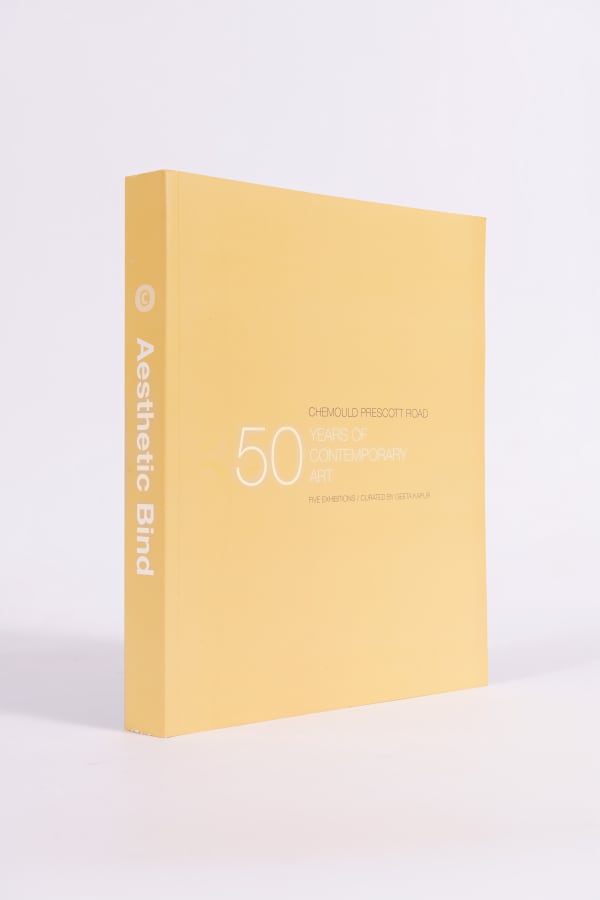
Aesthetic Bind
50 Years of Contemporary Art 2013 - 14SoftcoverRead more
Dimensions: 24 x 29 cm -
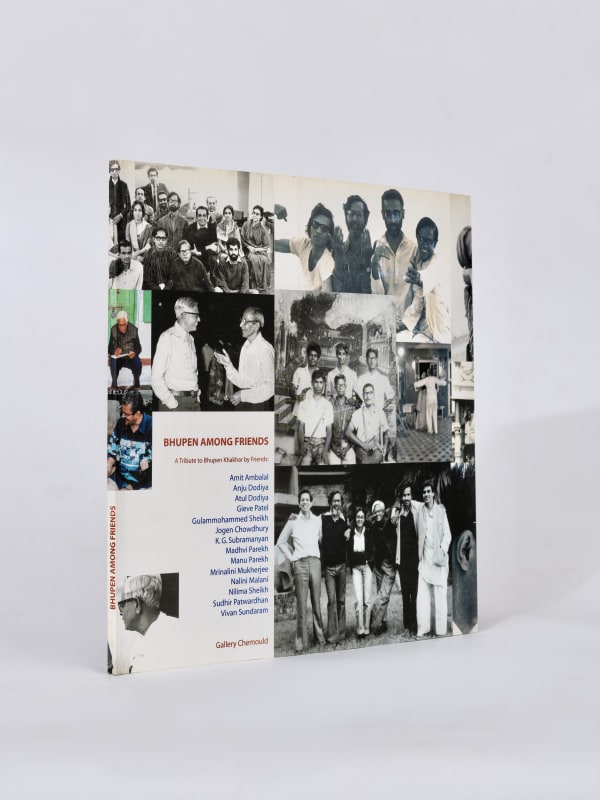
Bhupen Among Friends
Bhupen Khakhar 2005Softcover, 53 pagesRead more
Dimensions: 28 x 28cm -
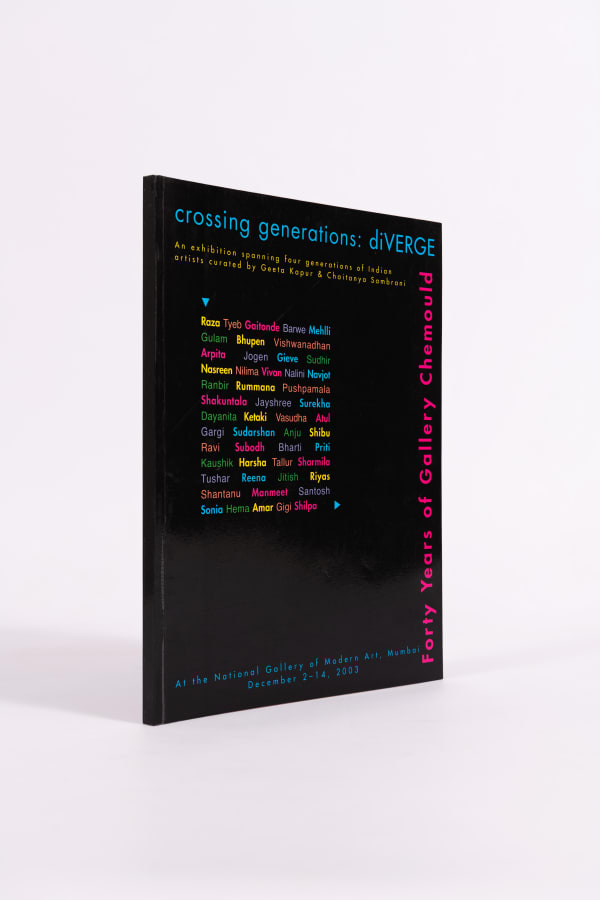
crossing generations: diVERGE
40 Years of Gallery Chemould 2003SoftcoverRead more
Dimensions: 29.5 x 23 cm -
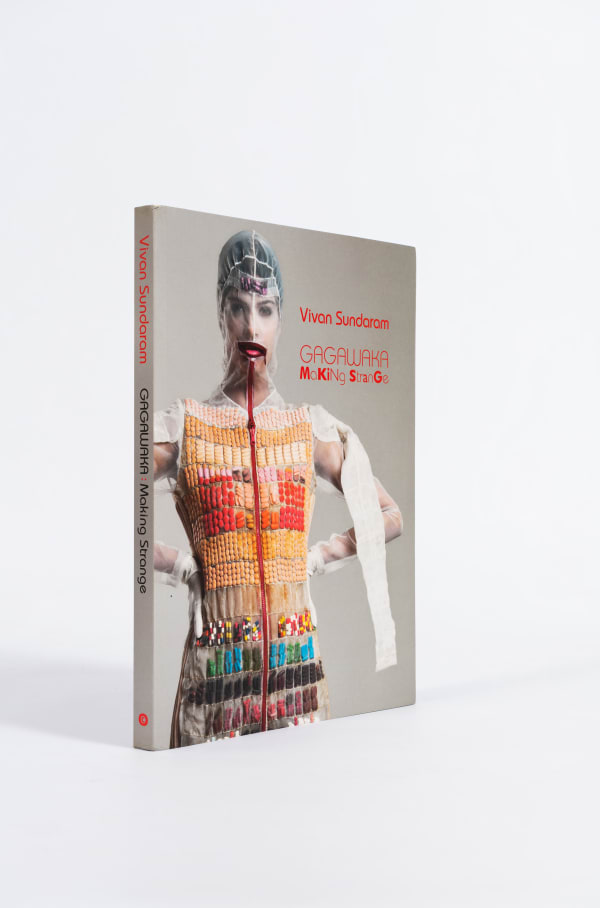
Gagawaka: Making Strange
Vivan Sundaram 2011SoftcoverRead more
ISBN: 9778190887946
Dimensions: 28 x 20.5 cm -
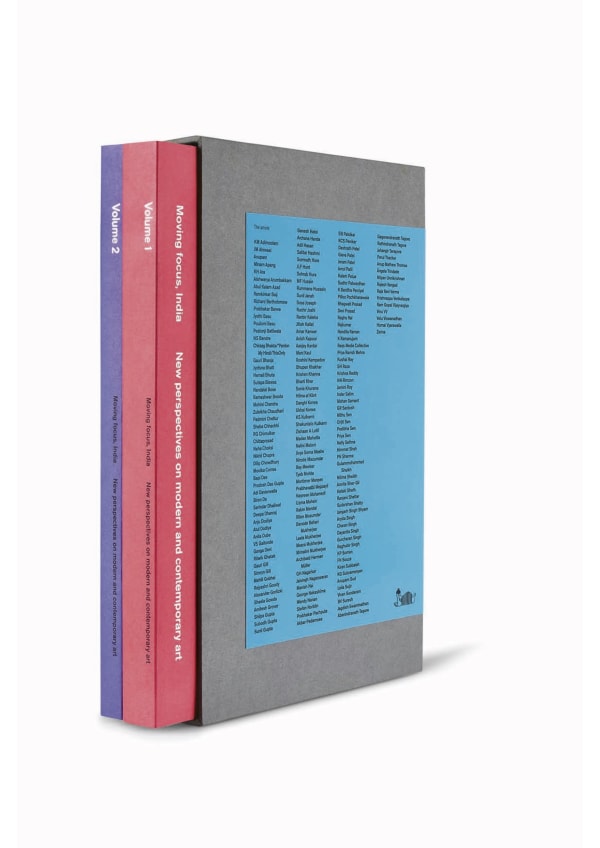
Moving Focus, India: New Perspectives on Modern and Contemporary Art
Edited by Mortimer Chatterjee 2022Two paperback volumes in a slipcase, 620 pagesRead more
Publisher: The Shoestring Publisher
Dimensions: 317.5 x 235 mm -
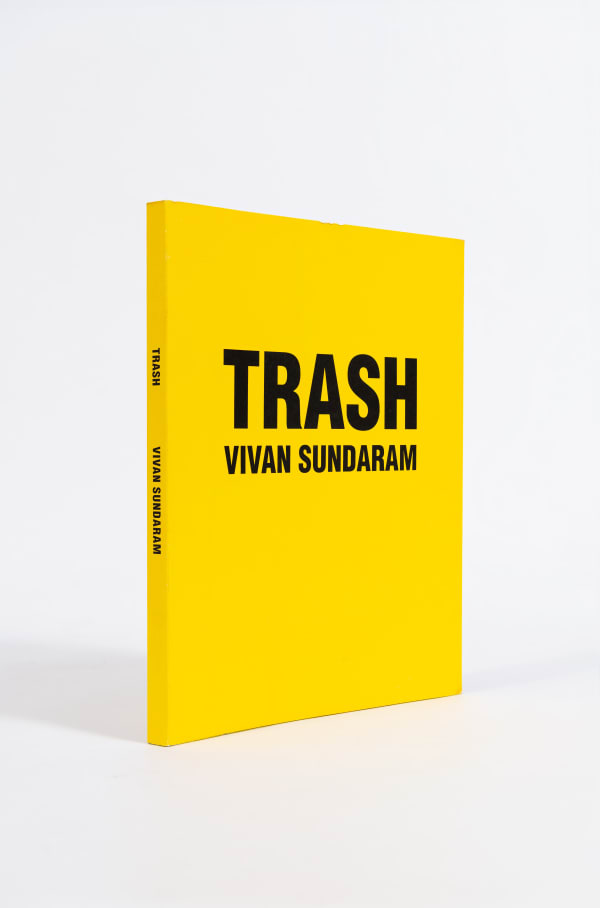
Trash
Vivan Sundaram 2008SoftcoverRead more
ISBN: 978-81-903911-3-9
Dimensions: 28 x 23 cm -
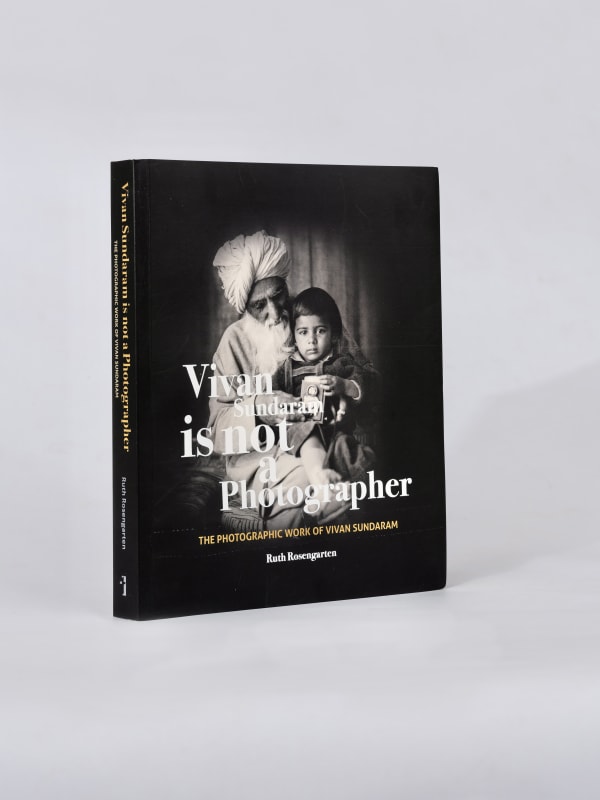
Vivan Sundaram is not a Photographer
The Photographic Work of Vivan Sundaram Ruth Rosengarten, 2019Softcover, 311 pagesRead more
Publisher: Tulika Books
Dimensions: 25.5 x 21cm












